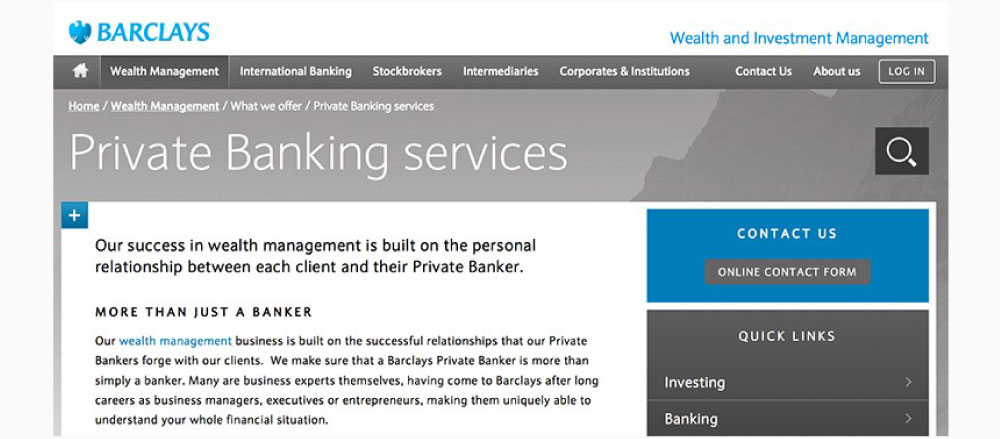When localizing their digital financial services, institutions such as banks, investment providers, family offices and wealth management firms should consider the following financial services localization best practices:
1. Drop the industry slang when localizing your digital financial services
Unless you’re addressing financiers, statisticians, economists and industry insiders, make sure your financial content is jargon-free and easy to understand by anyone. This also makes your financial content easy to translate and localize. Just in case it may have slipped your oversight, the spectrum of localization expands beyond the level of adapting your products and offering to specific locales- e.g., build an ETF based on gold, oil and energy stocks for investors in the Middle East, knowing their predilection for these asset classes.
Digital financial services localization means also adapting your language to make your products more accessible and engaging to prospects overseas. Localizing your financial offering helps you build trust by eliminating communication barriers between clients and You. Remember, language is your best asset.
Speaking about the benefits of using multilingual banking apps, Monsese’s Norris Koppel said in an interview with International Finance Magazine:
“There are many advantages to banking in your own language. We find that a lot of our customers find themselves travelling between countries for work, travel, study, or retirement. They want banking to be familiar. They don’t want to start again, in an unknown language, every time they arrive in a country. Banking in the language you feel most comfortable with is also very helpful in emergencies. If you have got to speak to your bank urgently because you’ve lost your cards, or you’ve noticed something unusual about your account, you want to do this in your native language.”
Both retail and corporate clients rely on banks to safeguard and make their funds grow. They put their trust in your digital financial services to lend them the extra profitability they seek. Sharing the language of communication helps you gain their trust.
2. What does it mean to localize your digital financial services?
Is it enough just to speak your clients’ language? Or does it take more to localize your services? Here is our take:
Localize your website and apps
Your website and/or financial mobile app is the first thing that prospects see. Your digital business card, if you will. So, not only does it have to be eye-pleasing but also has to provide a meaningful experience to end-users. It all starts with translating your website and mobile app content.
But before you start “shopping around” for financial translation providers, create a style guide and a brand guide to point translators and localizers in the right direction. Be sure to include as many in-context examples of specialised terms and brand names as you can to give translators enough background. While you’re at it, make sure to clarify the preferred tone of voice and style (e.g., Chicago, Vancouver, Harvard, Oxford, etc.). Your brand voice must be consistent in any language. This is why you should make sure to include as much guidance as possible for translators, so they make the best possible in-context word choices.
Localize your user journey
When localizing your website or app, don’t overlook user journeys. Don’t focus only on slogans and calls to action. There’s a lot more to multilingual lead conversion! Every aspect of the UI/UX matters.
Checkboxes, drop-down menus, forms, static and dynamic content, interactive features (e.g., chatbots, push notifications, SMS, IVR helplines, payment pages, log-in and sign-up pages, terms and conditions, etc.) are essential elements of your user experience. To make sure the information they carry is accurately translated into your clients’ language you need to engage translators and localizers from the early stages of the localization process. It’s vital to get everyone on board right from the start.
Once you’ve done that, put your nose to the grindstone and start by adjusting your web or app design to allow for text expansion. If you’re localizing for German or Dutch audiences, for example, you need to ensure your design can flexibly accommodate up to 35% more text without impacting the look and feel of your interface. Additionally, using Unicode can help you bring special characters to life and accommodate any language script hassle-free.
3. Fonts are more than a thing of beauty in digital financial services!
When localizing your financial brand to a different region, you seek to create an emotional impact. Fonts are one of the essential aesthetic elements that matter as much as your brand message. In finance, you wish to convey trust, professionalism, and reliability above all else. Fonts can also help you hit the mark.
Barclays, for example, uses a custom font across its website designed by Monotype in 2004 – Expert Sans.


When merging with insurance company Travelers, Citi Group had its logo re-designed based on the Interstate typeface, related to Highway Gothic – a font family used in the US for road signs. Citi uses Interstate fonts across its corporate literature and website – giving it a modern and light appearance.
When localizing your digital financial brand, you want to make it uniquely appealing to the region you go to. Hence, it’s crucial to choose a neutral typeface that makes your brand and content as accessible as possible. The Sans typeface, for example, is widely used by financial brands for its stylish and neat appearance in any language.
Talk To a Digital Financial Localization Expert!
Need help localizing your digital financial brand? We are the word masters you need to succeed in the increasingly competitive financial services market. Whether you need to have your website or mobile app localized, proofread, edited, or written from scratch, you can count on us. Get in touch and let’s talk digital finance localization in 75+ languages.

